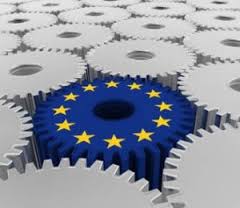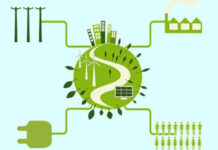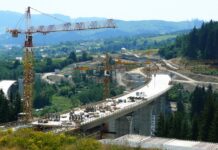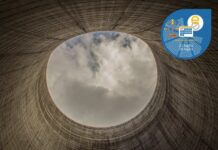Interview from Canale Energia to Hervé Laffaye, Entso-E President, on Ten-E.
Energy infrastructures are essential for achieving climate neutrality by 2050. In this, according to you, at what planned revision of infrastructures in Europe must look at in order to be effective and efficient?
Energy infrastructures will have indeed a key role in achieving climate neutrality by 2050 and all Entso-E members are fully committed to that goal.
The grids need to adapt to the new generation patterns and energy mixes: we need to integrate in our European grids the massive increase of the off- shore wind generation, which will be multiplied by 30 from now to 2050. 300 GW will then contribute to the European energy balance. Meeting this medium-term challenge requires action now, as infrastructure planning takes time. We have to be forward looking and the review of the Ten-E is a fantastic opportunity to question ourselves
Electricity and grids will also have a key role in enabling the decarbonisation of other sectors, like transport, heating/cooling, the “hard to abate” industrial sectors, etc.
At Entso-E, we consider that full system integration can be a real catalyst for decarbonisation, and we have developed a concept for that: the Multi-Sectorial Planning Support he revision of the Ten- E should incentivise cooperation between electricity and other sectors that need to be decarbonised.
Have you participated as Entso-E in the public consultation and in case those were your requests?
The Ten-E review is important to align the regulation with the objectives of the EU Green Deal.
And Entso-E is one of the key actors for the implementation of this regulation. As such, we have contributed -of course – actively in the debate on the revision of the Ten-E.
Entso-E is supportive of the Commission’s proposal. But some points need to be improved.
A major challenge the transmission system faces is the length of authorisation procedures. Shortening the duration between the planning of an infrastructure project and its implementation will be decisive for the success of the EU energy and climate policy. Entso-E made some concrete proposals on how to simplify processes, fasten permitting procedures and ensure better public engagement. The right conditions for financial support should also be set.
The governance of the Ten-year network development plans (Tyndps) shall remain simple enough, allow better stakeholder and civil society consideration and ensure an adequate balance of power. This long-term planning should also be coordinated further across sectors.
The revised Regulation shall ensure that offshore connection and offshore grid planning are fully coordinated. This is why Entso-E proposes to clarify the exact nature of the offshore development plans, and to update the offshore plans every 4 years, in order to align with the Tyndp process frequency.
In order to achieve EU climate objectives, the Ten-E should create a framework enabling essential projects with the EU neighbourhood by ensuring the same benefits between Projects of Common Interest (Pci) and Projects of Mutual Interest (Pmi), and also in term of financing. The criteria proposed by the European Commission to qualify Pmis are too restrictive and make eligible de facto only projects within the Energy community contracting parties. In this respect, prequalification criteria for Pmis have to be linked to the contribution of the project with climate objectives – rather than an alignment with EU overall legislation.
Also, the criteria for EU internal projects should be fit for purpose. For internal lines, it should be possible to assess the cross-border criterion also between bidding zones – and not only between Member States – and the threshold of 500 MW should be revised by introducing a lower value (e. g. 100 – 200 MW).
Was there a discussion between ENTSO-E and its stakeholders before proceeding?
As regulated entities, Tsos are under strict obligations to carry out extensive consultations with stakeholders in the delivery of their legal mandates and to act in full transparency. This principle also applies to Entso-E. Stakeholder engagement will be growing as we move towards a system of interconnected systems. The positions of Entso-E are the results of an alignment within the Tso members but they also take into account the feedbacks received during our interactions with stakeholders.
Do you think that the different European countries are sufficiently ALIGNED technologically to be able to succeed quickly in the challenge?
If the question is if the diversity of energy mixes across Europe is hindering the energy transition; the answer is no. This diversity is, in fact, an advantage as it increases the security of our interconnected systems. It requires of course solidarity among the different countries and to manage and monitor the appropriate physical infrastructure
The European power system is evolving towards a system of interconnected systems with an articulation between different functions (physical, market, digital…) and different geographies (local, regional, pan-European…). Entso-E and its Members are working in order to harmonise standards and facilitate the data exchanges, which will enable the global interoperability of the system.
Has the Covid-19 pandemic accelerated some needs?
Despite unprecedented circumstances, created by the Covid-19 pandemic, electricity Tsos have managed very well the situation, thanks to a careful cooperation, and have always maintained the
security of supply throughout Europe. I want to pay a tribute to the action of all our staff members, which have behaved on an exceptional way.
In the European Union, the decrease of electricity demand and the higher renewable energy generation have had for consequence a decrease of the non-renewable power generation. From February to the first week of July 2020, in several EU countries, in particular Italy, Spain and Germany, new RES records were reached during the lockdown period.
This situation has highlighted the need to accelerate investment in the grid, but also in storage systems, and the necessity to improve asset maintenance, which was left over during the pandemic. We have been using a lot our digital tools and the consequence is a need for stronger protection against cyber- attacks. During Covid-19 pandemic, all these challenges were efficiently managed by the different Tsos. Through Entso-E, Tsos have regularly exchanged with European authorities on how to maintain the operations of the grid, so that all citizens and corporations, and more specifically those most impacted by the pandemic could rely on a secure supply of electricity.
Do you think that this increase in distributed generation could create imbalances in the system? Or are we ready for the big step?
The system is changing and we have to adapt it. Entso-E is committed to make this future possible and is developing sustainable and innovative answers to prepare the future. This new situation requires adequate infrastructures, as discussed, but this won’t be sufficient. For example, the advent of more variable renewable energies and Distributed Energy Resources (Ders), coupled with the parallel decommissioning of conventional fossil fuel power plants, calls for the development of new approaches for the system operation and the sourcing of ancillary services.
The security and stability of the electricity grid will increasingly rely on the contribution of assets that are connected to the distribution grid. Entso-E proposes mechanisms for accessing flexibility services through shared market mechanisms and a strong cooperation between Tsos and Dsos. The joint work with the European Dso Association (Eudso) will help to identify concrete requirements that could be implemented in the EU technical rules, as the network codes.
Entso-E has been producing a series of studies that are looking at the power system of the future. For example, our study on Electro-mobility or on grid forming capabilities are looking at how to ensure the system’s stability with a higher share of variable renewable energy sources. We are also in the process of developing a new Vision looking at the 2050 horizon.
Per ricevere quotidianamente i nostri aggiornamenti su energia e transizione ecologica, basta iscriversi alla nostra newsletter gratuita
e riproduzione totale o parziale in qualunque formato degli articoli presenti sul sito.



















